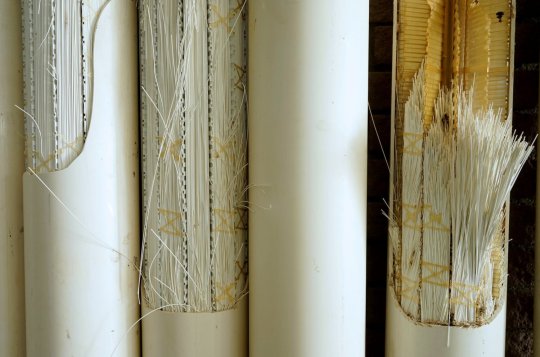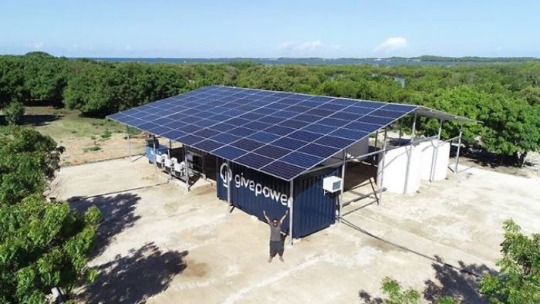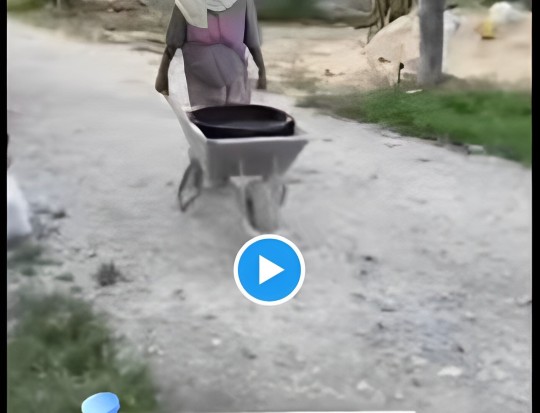#Potable Water
Explore tagged Tumblr posts
Text
"Namibia is the driest country in Sub-Saharan Africa, and home to two of the world’s most ancient deserts, the Kalahari and the Namib. The capital, Windhoek, is sandwiched between them, 400 miles away from the nearest perennial river and more than 300 miles away from the coast. Water is in short supply.
It’s hard to imagine life thriving in Windhoek, yet 477,000 people call it home, and 99 per cent of them have access to drinking water thanks to technology pioneered 55 years ago on the outskirts of the city. Now, some of the world’s biggest cities are embracing this technology as they adapt to the harshest impacts of climate change. But Namibia leads the way.
How did this come about? In the 1950s, Windhoek’s natural resources struggled to cope with a rapidly growing population, and severe water shortages gripped the city. But disaster forced innovation, and in 1968 the Goreangab Water Reclamation Plant in Windhoek became the first place in the world to produce drinking water directly from sewage, a process known as direct potable reuse (DPR).
That may sound revolting, but it’s completely safe. Dr Lucas van Vuuren, who was among those who pioneered Windhoek’s reclamation system, once said that “water should not be judged by its history, but by its quality”. And DPR ensures quality.
This is done using a continuous multi-barrier treatment devised in Windhoek during eight years of pilot studies in the 1960s. This process – which has been upgraded four times since 1968 – eliminates pollutants and safeguards against pathogens by harnessing bacteria to digest the human waste and remove it from the water. This partly mimics what happens when water is recycled in nature, but Windhoek does it all in under 24 hours...

Pictured: These ultrafiltration membranes help to remove bacteria, viruses and pathogens. Image: Margaret Courtney-Clarke
“We know that we have antibiotics in the water, preservatives from cosmetics, anti-corrosion prevention chemicals from the dishwasher,” Honer explains. “We find them and we remove them.”
Honer adds that online instruments monitor the water continuously, and staff ensure that only drinking water that meets World Health Organisation (WHO) guidelines is sent to homes. If any inconsistencies are detected, the plant goes into recycle mode and distribution is halted until correct values are restored.
“The most important rule is, and was, and always will be ‘safety first’,” says Honer. The facility has never been linked to an outbreak of waterborne disease, and now produces up to 5.5m gallons of drinking water every day – up to 35 per cent of the city’s consumption.
Namibians couldn’t survive without it, and as water shortages grip the planet, Windhoek’s insights and experience are more important than ever.
Interest from superpowers across the globe
In recent years, delegations from the US, France, Germany, India, Australia, Singapore, and the United Arab Emirates have visited Windhoek seeking solutions to water shortages in their own countries.
Megadrought conditions have gripped the US since 2001, and the Colorado River – which provides 40 million people with drinking water – has been running at just 50 per cent of its traditional flow. As a result, several states including Texas, California, Arizona and Colorado are beginning to embrace DPR.
Troy Walker is a water reuse practice leader at Hazen and Sawyer, an environmental engineering firm helping Arizona to develop its DPR regulations. He visited Windhoek last year. “It was about being able to see the success of their system, and then looking at some of the technical details and how that might look in a US facility or an Australian facility,” he said. “[Windhoek] has helped drive a lot of discussion in industry. [Innovation] doesn’t all have to come out of California or Texas.”

Pictured: The internal pipes and workings of Namibia's DPR plant. As water becomes scarcer in some parts, countries are looking to DPR for solutions. Image: Margaret Courtney-Clarke
Namibia has also helped overcome the biggest obstacle to DPR – public acceptance. Disgust is a powerful emotion, and sensationalist ‘toilet to tap’ headlines have dismantled support for water reuse projects in the past. Unfortunately, DPR’s biggest strength is also its biggest weakness, as the speed at which water can re-enter the system makes it especially vulnerable to prejudice, causing regulators to hesitate. “Technology has never been the reason why these projects don’t get built – it’s always public or political opposition,” says Patsy Tennyson, vice president of Katz and Associates, an American firm that specialises in public outreach and communications.
That’s why just a handful of facilities worldwide are currently doing DPR, with Windhoek standing alongside smaller schemes in the Philippines, South Africa and a hybrid facility in Big Spring, Texas. But that’s all changing. Drought and increased water scarcity worldwide are forcing us to change the way we think about water.
Now, the US is ready to take the plunge, and in 2025, El Paso Water will begin operating the first ‘direct to distribution’ DPR facility in North America, turning up to 10m gallons of wasterwater per day into purified drinking water – twice as much as Windhoek. San Diego, Los Angeles, California, as well as Phoenix, Arizona are also exploring the technology."
Of course, DPR is not a silver bullet in the fight against climate change. It cannot create water out of thin air, and it will not facilitate endless growth. But it does help cities become more climate resilient by reducing their reliance on natural sources, such as the Colorado River.
As other nations follow in Namibia’s footsteps, Windhoek may no longer take the lead after almost six decades in front.
“But Windhoek was the first,” Honer reminds me. “No one can take that away.”"
-via Positive.News, August 30, 2023
#namibia#africa#desert#water shortage#water conservation#dpr#potable water#water recycling#clean water#drought#united states#colorado river#science and technology#sanitation#good news#hope
2K notes
·
View notes
Text
Nothing to see here, just 20 million people whose access to a safe water supply has been obliterated by flooding, carry on.
60 notes
·
View notes
Text

📍Iserables, Switzerland
20 notes
·
View notes
Text

NBMN
Kenya Has Installed Its First Solar Powered Plant That Turns Ocean Water Into Drinking Water
#black diaspora news#black diaspora#kenya#water#solar power#solar panels#drinking water#africa#tech#potable water
3 notes
·
View notes
Text
On September 27 we lost all of our utilities due to Hurricane Helene. The power came back on after four days. Restoration of internet and cell service both took about a week.
Until October 15 we had no running water at all. On November 18 (day 52), water resources announced that we finally have potable water.
....HOWEVER, there is a possibility there is lead in our water now. There was a 19 day window where the water wasn't treated with the normal anti-corrosive chemicals, the water had a high level of chlorine, and the pH was way higher than usual. While the source water is now clean as per EPA standards, the changes in water chemistry may have caused lead and copper to leach into the water (likely from service lines and indoor fixtures/pipes/solder). Every service installed prior to 1988 is potentially leaching lead into the water.
You can get a test and line verification from the city, but unsurprisingly, there is a huge backlog of requests at the moment. We ordered a different test. We should be able to test the water when it comes in later this week. And so we are once again waiting- this time, to see if there is lead in our tap water.
I am very tired.
0 notes
Text
Challenges in Western North Carolina After Hurricane Helene
Struggles in Western North Carolina Post-Hurricane Helene Nearly a month has passed since the remnants of Hurricane Helene wreaked havoc in western North Carolina, particularly around the Asheville area. While running water has been restored to most residents, the situation remains far from normal. Currently, the water emerging from taps is often discolored, appearing yellow or brown, rendering…
#Asheville#clean water#community resilience#disaster relief#Gov. Roy Cooper#Hurricane Helene#mobile shower facility#potable water#water supply#Western North Carolina
0 notes
Text
No Fresh Water for Visitors at a Canadian UNESCO World Heritage Site
September 1, 2024 Our recent visit to the Davis Locks on the Rideau Canal, a Canadian UNESCO World Heritage Site, was marred by a frustrating experience. As we attempted to fill our water jugs with fresh, filtered water, a note pasted at the freshwater supply hose alerted us to a ‘boil water advisory’. This inconvenience, which surely affected other visitors as well, highlights the pressing need…
0 notes
Text
East Orosi's Struggle for Clean Drinking Water
A person holding a “Justicia para East Orosi” sign. Credit: Sandra Tsang East Orosi hasn’t had safe drinking water in over 20 years. The water is full of nitrates, runoff from industrial agriculture, which is harmful to human health. The community has taken action to find a solution, from lobbying at the state capital to working with neighboring towns. And they may finally have one. New…
#affordable#California#Central Valley#Community Water Center#drinking water#east orosi#farmworker#fertilizer#jina chung#Making Contact#nitrates#pollution#potable water#poverty#radio project#Resources#Resources Control Board#safe#SAFER#Salima Hamirani#San Joaquin Valley#sanitation#SB 200#Self Help Enterprises#septic tank#utilities#utlity district#Water#water infrastructure#wells
0 notes
Text
Sharing with updated info as of 3/30
All water should be safe to drink again! A lot of times this gets shared without the news that the crisis has passed. *If you have a latex allergy you might still want to be careful with water east of the Schuylkill for the rest of the week or head to west Philly for cleaner water.*
West Philly was not impacted and continues to not be impacted because West Philadelphia uses a different water reservoir than the rest of the city. I’ve seen some confusion that they’re “just not testing the water” but they do not have to in West as our water doesn’t come from the Delaware. West Philadelphia has a separate water system from the rest of the city.
great!!!! super great!!!!
#philadelphia#potable water#emergency alerts#3/30/23#it’s SAFE i PROMISE#especially if you’re a west willian like me#the gov sure makes this info complicated to know and share tho
4K notes
·
View notes
Text
Practice English
The US Army Corps of Engineers is planning to barge 36 million gallons of freshwater daily into the lower Mississippi River near New Orleans as saltwater intrusion from the Gulf of Mexico continues to threaten drinking water supply, officials said Friday. — Read on amp.cnn.com/cnn/2023/09/23/us/freshwater-new-orleans-saltwater-mississippi-river/index.html
View On WordPress
#Army Corps of Engineers#English as a Second Language#ESL#New Orleans#Potable Water#practice English
0 notes
Text
youtube
1 note
·
View note
Text
This is How Kelantanese Get Their Potable Water
PAS attacks PM Anwar Ibrahim for the economic, social and water woes of Kelantan. But PAS is ruling the state, and has no plans or brains on how to solve the issues. Right? The Kelantanese love them? Water Woes Now see how the citizens of Kelantan are using their ingenuity – of course, they are forced to – to get potable water. This is Malaysia in 2023 folks and if you want to see that in…

View On WordPress
0 notes
Link
Ohangwena region deserves opportunities that other regions are enjoying, Popular Democratic Movement parliamentarian Lukas Hamata said in his contribution on the appropriation bill in parliament on Wednesday.
He said Ohangwena is one of the largest regions by population, yet the poorest and least developed. “The Ohangwena region is faced with a number of socio-economic challenges, such as unemployment, gender-based violence, income inequalities, housing needs, poor sanitation, poor road infrastructure and [a lack of] access to potable water,” Hamata said. According to Hamata, although Ohangwena is blessed with underground water that is enough to be used for 400 years, the government has neglected the region for years. “In the 2022/2023 medium-term expenditure framework, the Ohangwena region received the fifth lowest developmental budget allocation, despite being the second highest populated region in Namibia. This speaks volumes on how the region is disregarded in terms of developmental priorities,” he said.
#electricity#roads#housing#sanitation#GBV#potable water#Ohangwena#Namibia#news#via Energy100FM#world news
0 notes
Text
putting my prediction on record now that the coming decade is going to see the rise of viral-marketed fancy at-home water filtration systems, driving and driven by a drastic reduction in the quality of U.S. tap water (given that we are in a 'replacement era' where our current infrastructure is reaching the end of its lifespan--but isn't being replaced). also guessing that by the 2030s access to drinkable tap water will be a mainstream class issue, with low-income & unstably housed people increasingly forced to rely on expensive bottled water when they can't afford the up-front cost of at-home filtration--and with this being portrayed in media as a "moral failing" and short-sighted "choice," rather than a basic failure of our political & economic systems. really hope i'm just being alarmist, but plenty of this already happens in other countries, and the U.S. is in a state of decline, so. here's praying this post ages into irrelevance. timestamped April 2023
#apollo don't fucking touch this one#serious post#not a shitpost#hope i forget about this post and have no reason to ever look back on it one day#fyi i'm aware that access to potable water is already a major issue in parts of the U.S. yes i know flint michigan exists#i'm saying that this issue is going to GROW unless local & federal governments work together to fix it.#so it's a matter of if we trust them to fix it. And well--do you?#what are the chances the government just denies there's a problem until the water actually turns brown#at which point it's already been common knowledge for years and people have just become resigned and that's our new normal#i'm mean come on. how many of us already believe that we're being exposed to dangerous pollutants we don't know about and can't avoid#like that's pretty much just part of being a modern consumer. accepting that companies will happily endanger your life for a few pennies#and the most you'll get is like a $50 gift card as part of a class action rebate 20 years down the line#probably the history books will look back on Flint as a warning and a harbinger that went ignored#luxury condos will advertise their built-in top-of-the-line filtration systems--live here and you can drink water straight from your tap!#watch the elite professional class putting $700 dyson water filtration systems on their wedding registry#while the rest of us figure out how to fit water delivery into our grocery budget while putting 90% of our paycheck towards rent#also eggs are $15
5K notes
·
View notes
Text



(x)
#metal gear#metal gear solid#mgs#kazuhira miller#venom snake#vkaz#friend sent me this reel saying it's Kaz asking Bibo#But u see. Bibo wouldn't care#nor would he even acknowledge there's potable & non-potable water#it's definitely Venom
527 notes
·
View notes
Text
147 notes
·
View notes